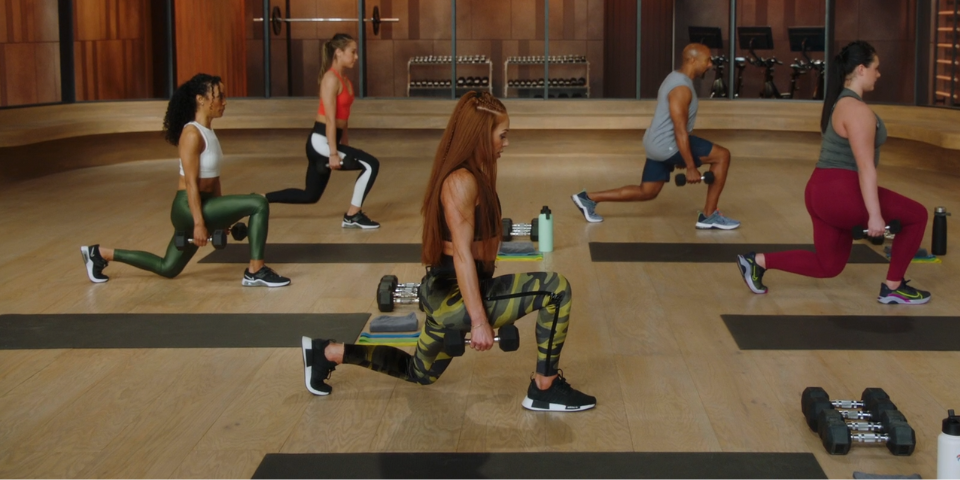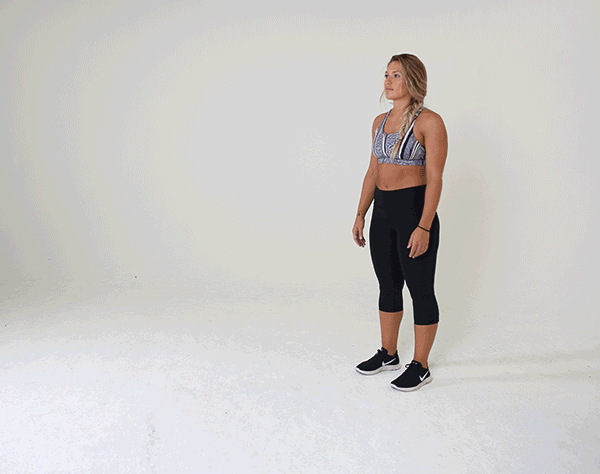Walking lunges for lower-body muscle, strength, and stability inspire dread among gym goers for one simple reason: They’re hard. Scroll down to read this post by

“I always enjoy the groans from clients when they realize walking lunges are on the menu for the day,” says Tom Biggart, DPT, CSCS, owner of EBM Fitness Solutions.
While the move itself is easy to learn, walking lunges challenge your balance, engage your core, and elevate your heart rate — all while setting your quads and glutes on fire.
What Are Walking Lunges?
They are, essentially, a traveling forward lunge. Rather than stepping the lunging foot back to its starting position, you step the back foot forward.
When performed properly, walking lunges are an effective bodyweight exercise that can help strengthen and build your glutes and leg muscles. They can be used as a strength move in circuit workout, or — if you’re already pretty fit — as a dynamic stretch in a warm-up.
You can also make walking lunges more challenging with variations that add resistance — like dumbbell walking lunges, overhead walking lunges, or barbell walking lunges.
Walking Lunges: Step-by-Step Instructions
- Stand with your feet about hip-width apart and your hands on your hips or holding two light dumbbells by your side.
- With a stride that’s a little less than double your normal walking stride, take a step forward with your right leg.
- Bend your right knee about 90 degrees (or as low as you can comfortably go) and lower your left knee, allowing it to hover just above the ground. Your back knee should also be bent at around a 90-degree angle.
- With your weight on your right foot, push off your left foot and straighten your legs, bringing your left foot forward to meet your right foot as you return to a standing position.
- Repeat on the opposite side, lunging forward with your left leg.
- Continue to move forward, lunging with alternating legs, for the specified distance or number of steps.
While doing them, be sure your back knee stays facing straight in front of you and doesn’t rotate inward, especially as you push off your back foot. Keep your chest up and shoulders back, and use your core for balance.
Walking Lunges: Benefits & Muscles Worked

They are easy to master, but challenging to do — and they can be a great addition to your workout routine. Here are a few key benefits of walking lunges.
1. Versatility
“Walking lunges have many advantages, such as the ability to do them anywhere,” says Rebekah Miller, MS of Kinesiology, CSCS, NASM-certified personal trainer. “They work many different muscles, and they can be varied by adding weight.”
You can also vary them with the following variations:
- Speeding them up
- Adding a half-rep at the bottom
- Adding a twist or an isometric hold at the bottom
- Doing curls or overhead presses as you “walk”
- Holding a barbell overhead throughout the exercise
- Doing them on an incline or decline
2. Lower body strength
In addition to engaging the core muscles, they will target the lower body:
- Quadriceps
- Gluteus maximus
- Gluteus medius
- Adductors
- Hamstrings
- Calves
If you’re after more defined quads or a shapelier rear, they can you help you strengthen and build nearly every major muscle from the waist down.
3. Functional fitness
They are also considered a functional exercise, says Rachel Fiske, NC, NASM-certified personal trainer. Add them to your workout, she says, and not only will your overall fitness improve, but you may find you have an easier time with daily tasks like carrying groceries up the stairs or running to catch the bus.



